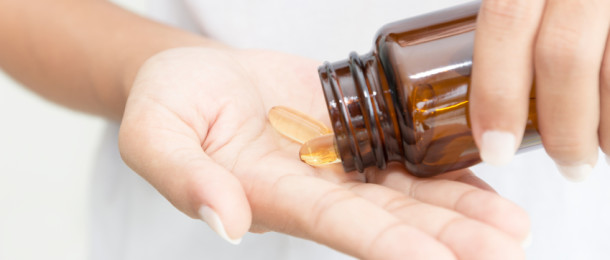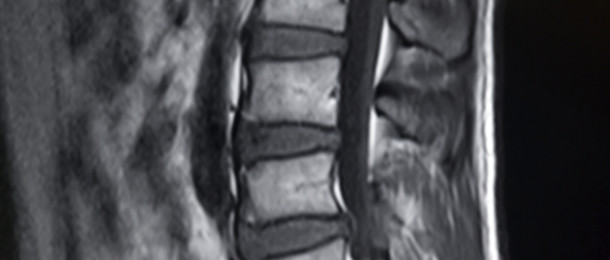Managing Chronic Pain to Improve Quality of Life

A warning sign that your body or mind is experiencing a problem, pain can appear suddenly or increase gradually over time. The sensation may be mild and intermittent or severe and persistent. According to the National Institute of Neurological Disorders and Stroke, untreated, acute pain can become a chronic issue. Persistent pain can occur because of an illness or an injury as well as distressing emotional events like grief and anxiety. The pain can linger for months or years and negatively affect your physical and emotional well-being. However, there are many things you can do to start managing chronic pain to improve your quality of live.
Tips for Managing Chronic Pain
While living with chronic pain can be difficult, it is possible to improve your quality of life and ability to function. Although advances in medicine have provided cures for some diseases and extended the lives of people suffering from a variety of illnesses, health care professionals are still struggling to understand and control chronic pain. Holistic techniques and programs focusing on the patient help individuals manage their pain. These interdisciplinary programs are designed to encourage those dealing with pain to regain control over their lives by taking an active role in their treatment.
Anti-Inflammatory Foods
Patient-centric pain management programs often incorporate diet and exercise regimes. The Journal of Alternative and Complimentary Medicine published a study confirming the ability of an easy-to-digest diet free of processed foods to alleviate inflammation, a major trigger for pain. In addition to aiding the digestive process and providing essential nutrients, a healthy diet reduces the risk of heart disease, helps keep weight under control and improves blood sugar levels. It is also important to stay well hydrated. According to the Mayo Clinic, dehydration aggravates chronic headaches and backaches. While it may be tempting to consume juice, coffee or soda, their diuretic characteristics make these beverages a poor overall choice. Water keeps you hydrated without excess caffeine, calories and sodium.
Exercise
Exercise helps with managing chronic pain by naturally increasing your endorphin levels. These brain chemicals block pain signals and improve the mood. Thirty minutes of daily exercise strengthens muscles by reducing the potential for injuries and illnesses. It helps you maintain normal weight, lowers the risk of heart disease and controls blood sugar levels. A regular exercise regimen along with relaxation techniques reduces stress, anxiety and depression, which can intensify chronic pain. Patients who are unable to engage in strenuous exercise may still benefit from meditation, yoga and massage. In addition to improving the quality of sleep and increasing your range of motion, massage therapy and yoga can reduce stress levels.
Lifestyle Choices
Lifestyle choices like smoking and excess alcohol consumption worsen chronic pain. People who smoke are more likely to experience chronic pain than people who do not smoke. An ineffective pain management strategy, alcohol interferes with the ability to cope with pain. Chronic pain sufferers should also consider joining a support group. Talking about the pain with others who suffer the same or similar problems give patients the comfort that they are not alone and helps with managing chronic pain. Other members of the group can provide encouragement and ideas on how to deal with chronic pain. The American Psychological Association recommends psychotherapy for pain sufferers. Biofeedback, cognitive behavioral therapy and guided imagery are techniques that also help you manage pain.
A comprehensive pain management program overseen by your doctor can improve your quality of life by helping you cope with the physical and mental effects of the condition.
If you are reading this on any other blog than Comprehensive Pain Management Center or via my RSS Feed, it is stolen content without credit. You can find us on Twitter via @CompPainMgmt. Come and visit our blog at http://www.compainmc.com/blog/.
Herniated Disk: What It Is and How to Treat It

Most people have back pain at some point in their lives. Back pain is one of the most frequent reasons that people are absent from work or go to the doctor. Although it is possible for back to result from many conditions, a herniated disk is one of the more common causes.
What is a Herniated Disk?
Your spine consists of 26 bones. These bones are called vertebrae. In between the vertebrae are soft disks that are filled with a jelly-like material. The disks provide cushioning to the vertebrae. They also help keep them in place. Sometimes, disks degenerate or break down. When the disks weaken, they may rupture. This is known as a herniated disk. A herniated disk allows the jelly-like matter in the middle of the disk to leak out. This can irritate the nearby nerves, causing pain. In addition, it can place pressure on the spinal cord and cause numbness or weakness in a leg or arm. Some people experience no symptoms at all.
What Causes it?
Most of the time, herniated disks are caused by either age-related wear and tear. Over time, spinal disks become less flexible and more prone to rupturing. This is also known as degeneration. In other instances, herniation can be caused by a traumatic event, such as car accident or blow to the back.
How is it Diagnosed?
Your doctor can diagnose a herniated disk with a medical history and a physical exam most of the time. They may order other tests, as well. Here are the most common tests:
Nerve tests
Nerve conduction examinations and electromyograms assess how well electrical impulses move through the nerves. This can help identify if nerves are damaged.
Imaging tests
One of the following tests may be ordered if your physician suspects that another condition might be causing your symptoms or if he or she needs to see which nerves are affected.
- X-rays-Although normal X-rays cannot be used to determine if a disk is herniated, they can be used to determine if your back pain might be due to another cause.
- Computerized Tomography Scan-A CT scan refers to a series of X-rays taken from many different viewpoints. The images are then combined to create a cross-sectional view of the spinal column, as well as the structures surrounding it.
- Magnetic resonance imaging-Also known as an MRI. This test uses a magnetic field and radio waves to generate images of your tissues and organs. An MRI is often used to pinpoint where the herniated disk has occurred and to determine what nerves are involved.
What Treatments are Available?
The primary goal of treatment is to help the patient return to their normal level of activity and relieve pain and other symptoms that result from a herniated disk. Every patient’s treatment plan should be individualized depending on the source and severity of the pain and whether or not they are exhibiting any other symptoms. In most cases, patients start with a course of conservative care prior to considering surgical options. In rare cases, immediate surgical intervention may be needed to prevent more serious symptoms. Conservative treatments for a herniated disk may include:
- Exercise programs or physical therapy
- Massage therapy
- Acupuncture
- Cognitive behavioral therapy
- Bio Feedback
Other treatments for herniated disk include:
- Pain medications
- Epidural injections
- Spinal Surgery
Although disk herniation can be quite disabling, with proper treatment and care, most people completely recover. If you or your primary care physician suspects that you have a herniated disk, seek the advice of a pain management specialist. They can provide you with a range of treatment options to help you return to your previous level of activity.
If you are reading this on any other blog than Comprehensive Pain Management Center or via my RSS Feed, it is stolen content without credit. You can find us on Twitter via @CompPainMgmt. Come and visit our blog at http://www.compainmc.com/blog/.
